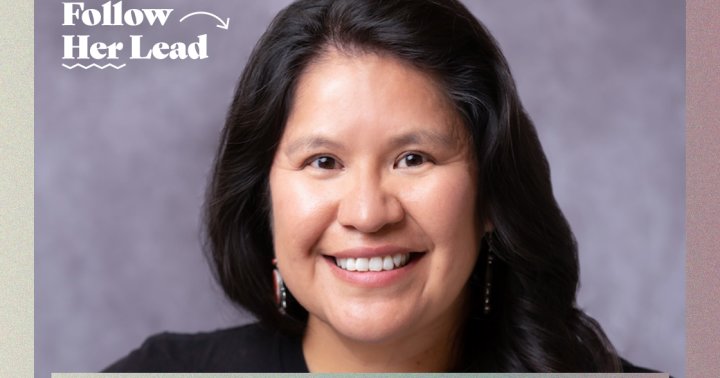The Eightfold Path of Joy and Liberation
The Buddha’s four noble truths include the truth that the eightfold path is a way out of suffering. It’s not just the path to happiness, says Sister True Dedication. It’s happiness itself. The post The Eightfold Path of Joy...

When Siddhartha Gautama gave his first teaching after enlightenment, it was to five friends in the deer park at Sarnath, not far from Varanasi in the Ganges Valley. Wanting to transmit to them the essence of his breakthrough, he crystallized his insights into what would become known as the four noble truths. These include the truth of the way out of suffering, known as the noble eightfold path: right view, right thought, right speech, right action, right livelihood, right effort, right mindfulness, and right concentration.
The eightfold path offers a way to touch awakening as Gautama did. These insights were not the result of thinking or study, nor were they a creed or philosophical doctrine. They were the fruit of Gautama’s own direct experience and meditative realization, and they conveyed a path that traced a “middle way” between the two extremes of asceticism and indulgence. It was a way, he believed, that could lead anyone to realize understanding, liberation, and peace.
“You don’t hurry to get the dishes done quickly so you can get on with something else. You encounter the miracle of life that includes dishes.”
As a species we’re still struggling to find a middle way, to steer a wise course through the extremes of fanaticism, greed, nihilism, rage, and despair. The ancient wisdom of the eightfold path offers eight matrixes that are powerfully relevant today as a guide to help us navigate these extremes and bring a meaningful direction to our daily lives, actions, and relationships.
All elements of the eightfold path inter-are. You cannot extract any of them from the context of the path. So, for example, if you take mindfulness out of the ethical context of the path, it is no longer right mindfulness. All eight elements are interrelated and interdependent. They enhance each other. When practiced deeply, each element of the path contains the other seven within it, and they complement each other to create a complete path to liberation.
My teacher, Thich Nhat Hanh, taught that right mindfulness is at the heart of the eightfold path. So, with the energy of right mindfulness as the foundation, we’re able to develop right concentration. This gives rise to insight or “right view,” which Thich Nhat Hanh described as the “insight of interbeing.” It is this deep view of the world that guides us to an ethical and beneficial life through right thinking, right speech, right action, right livelihood, and right effort. So, when you generate the energy of mindfulness, you are naturally concentrated on the object of your mindfulness, whether it’s your breathing, your body, the sunset, or the presence of the person in front of you.
 Photo © Noumae | Dreamstime.com
Photo © Noumae | Dreamstime.comThe energies of mindfulness and concentration naturally give rise to insight, right view. You touch the insight of interbeing between your breath and the earth, or between your body and your ancestors and descendants, or between your heart and the sun in the sky. You realize that you inter-are with the person in front of you.
Already, this insight of interbeing helps us touch peace, joy, and freedom.
Now, with the energy of mindfulness, concentration, and insight, your thinking will naturally be right thinking.
It will be free from discrimination and separation, and on the basis of that thinking, your speech will be right speech and your action right action.
Cultivating right diligence (or effort) in that moment, you’ll be able to see and calm any unwholesome seeds that may get triggered in your consciousness, such as anger or despair, and identify and activate positive seeds, such as gratitude and compassion. With all those energies alive in you, the way you spend your time, energy, and labor—your livelihood—will be “right.” It will be beneficial for you and everyone around you.
Of course, if there’s “right,” there must also be “wrong.” The Buddha’s teaching does assert that there’s a right and wrong way to go about things. There’s a distinction, for example, between “right mindfulness” and “wrong mindfulness,” between “right concentration” and “wrong concentration,” between “right speech” and “wrong speech.” There’s a way of practicing mindfulness, concentration, and the others that goes in the direction of healing and well-being, and there’s a way that goes in the direction of harm and ill-being.
This is where ethics comes into every aspect of the eightfold path. The wrong path does exist—it’s the “ignoble” path of wrong view, wrong thinking, wrong speech, and wrong action that leads to suffering for ourselves, for others, and for the planet. It’s the reason why we’re in the state we’re in. And it’s why we need to find another way of being.
You may wonder, how can there be a wrong way to practice mindfulness? Surely all mindfulness is beneficial? In 2014, Thich Nhat Hanh’s last year of teaching, he spoke about the importance of not diluting or appropriating mindfulness as it spreads in the West and reaches new audiences and settings. He explained that the first way to distinguish “right” from “wrong” mindfulness is to realize that right mindfulness is not an instrument or tool but a way, a path. It cannot be used as a means to an end.
Yet many of us do speak of mindfulness as a tool. We say that with mindfulness we can heal, with mindfulness we can reconcile, with mindfulness we can make more money, and, in applying mindfulness in the military, with mindfulness we can kill the enemy more effectively. To appropriate mindfulness in this way is to instrumentalize it. Used as a means to an end, whether for profit, success, or even for apparently “beneficial” ends, mindfulness loses its true, authentic spirit. In fact, if you extract any of the eight elements out of the wider ethical context of the path, it is no longer “right.”
The image of “path” or “way” is essential to Buddhist spirituality, and yet it may be challenging for those of us educated in Western capitalist countries. We prefer there to be a goal, a destination, a clear program. We may be seeking a powerful, final moment of “grace” or “attainment.” But as Thich Nhat Hanh used to ask us teasingly,
“Why haven’t you ever asked if the Buddha kept practicing after enlightenment?”
The eightfold path is not so much linear as circular, which is why it’s often seen more as an eight-spoked wheel than a list. The Western-educated mind may struggle with this. We want to know where to start and where we end up. We want to know which element is more important.
 The eight-spoke dharma wheel symbolizes the eightfold path. Photo: godongphoto / shutterstock.com
The eight-spoke dharma wheel symbolizes the eightfold path. Photo: godongphoto / shutterstock.comBut in his later years of teaching, Thich Nhat Hanh revised his translation of the eightfold path to be not merely “the path leading to happiness,” but “the path of happiness.” He taught that in the true spirit of the insight of interbeing, every step along the path leading to happiness must be happiness itself. If we suffer along the way, we’ve lost the game already.
This is strong medicine for the Western tendency to sacrifice means for an end, and for the deep energy of running and striving in our culture. And it’s good news. The eightfold path is not a path of thorns or sacrifice. There’s no need to set our jaw or grit our teeth. There’s an art and poetry to the path of spiritual practice. With every step along our journey we can arrive at our destination. With every step, we can touch happiness, peace, and freedom.
It’s true that at any given moment, one aspect of the path may come more to the fore than another. There may be times we spend a few weeks or months developing right concentration and stillness. Or other times when we focus more on transforming habits of speech, or redirecting our livelihood to be more in line with our aspiration. These things take time to nurture and ripen, and cannot happen all at once.
On the other hand, there may be some settings, as simple as washing the dishes, in which we can actively realize all eight elements at once, and touch joy and freedom right in the heart of our daily life. Every aspect of the path can be realized right in the heart of the present moment: you don’t need to practice for ten days or ten years in order to have insight.
Suppose at some point today you need to wash the dishes. While standing at the sink, you generate the energy of mindfulness—mindfulness of your body and breathing, of your feet on the ground and hands in the water. On an out-breath you may release tension in your body, shoulders, and face, and become fully present for yourself, the dishes, and the wonder of life right in this moment.
You don’t hurry to get the dishes done quickly so you can get on with something else. You encounter the miracle of life that includes dishes. Within a few moments, you begin to develop concentration, and looking deeply into the water, the soap, the sponge, and the dish, insight may naturally arise. Can you see the galaxy in the spoon? Can you see the mountains in the plate? Can you see your grandparents’ hands in your own?
With this kind of insight, your thinking will be right thinking. You won’t think, “Why is it always me who has to do the dishes?” As you enjoy every aspect of washing the dishes and cleaning up, our thinking, speech, and action will carry the insight of interbeing, compassion, and nondiscrimination.
With these energies in you, you’ll be able to handle reactions or frustrations as they arise and generate gratitude, peace, and freedom. In that moment, you won’t discriminate between “work” and “life.” Every part of life belongs to the miracle of being alive. And in that moment, you penetrate the matrix of the eightfold path, you realize the Buddha’s insight in your own life, and you touch peace, freedom, joy, and happiness right in the heart of the present moment.

Before Sister True Dedication ordained, she worked as a journalist for BBC News in London. She now edits books by Thich Nhat Hanh, including Zen and the Art of Saving the Planet and The Art of Living.

 ShanonG
ShanonG 

























![What Is Yoga? Meaning, Philosophy, History, and Benefits Explained [With Infographics]](https://fitsri.com/wp-content/uploads/2018/07/what-is-yoga-brief-info.jpg)





